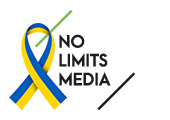- Stephan Kalesse
- October 14, 2021
Accessibility in the media doesn’t just encompass subtitles and audio description. It also includes converting texts into ‘plain language.’
Plain language is a greatly reduced language variety. The objective of plain language is to ensure the comprehension of a text, by greatly simplifying grammatical structures as well as wording. Thus, in plain language subordinate clauses, for instance, are not permissible and foreign words and specialist terminology should also be avoided. There are various strategies for implementing this simplification that are applied when translating into plain language. If, for example, it is not possible to avoid specialist terminology, an explanation of the term concerned is inserted into the plain language text so that it may be understood.
A lot of these translation strategies have proven themselves in practice and are continuously adopted. There are, however, also cases in which the implementation of plain language has not been sufficiently tested and a generally accepted solution to ensure maximum comprehension does not exist.
Because plain language emerged primarily from practical application, there are different guidelines that concur on many points, but also differ in some instances. Associations such as the Netzwerk Leichte Sprache https://www.leichte-sprache.org (Network for Plain Language) or Inclusion Europe https://www.inclusion-europe.eu/de/neue-erklaerungen-in-leichter-sprache make their plain language rules available on their websites. The Forschungsstelle Leichte Sprache (Research Center for Plain Language), at the University of Hildesheim has, among other things, published a Duden Dictionary of Plain language, which further differentiates rules and sometimes empirically supports them.
The Equality for Persons with Disabilities Act of 2016 (Behindertengleichstellungsgesetz – BGG), and the resulting Ordinance on Accessible Information Technology (Barrierefreie-Informationstechnik-Verordnung – BITV 2.0), are the main providers of the legal framework for the use of plain language in Germany, the objective of which is equality for people with disabilities. They oblige public authorities in particular, to provide texts in plain language to ensure the equal participation of people with cognitive impairments. These people, however, are not the only ones who benefit from plain language texts. Usually, the plain language target group is extremely large and heterogenous. Besides the primary addressees, i.e., people with cognitive impairments, secondary addresses also benefit from easier comprehension. These include, for example, people who are learning a language as a foreign language, as well as people who have limited reading skills due to a prelingual hearing impairment.
Plain language can help all these groups of people autonomously access texts and media. Even if the focus is still on translating technical texts that manifest obstacles to comprehension for people without language barriers too, plain language can also be a great help in all the other areas for the target groups concerned.
No Limits Media will help you with the implementation. Contact us.

